5 Natural Lectin Blockers Can Assist Your Gut Health (2024 Updated)
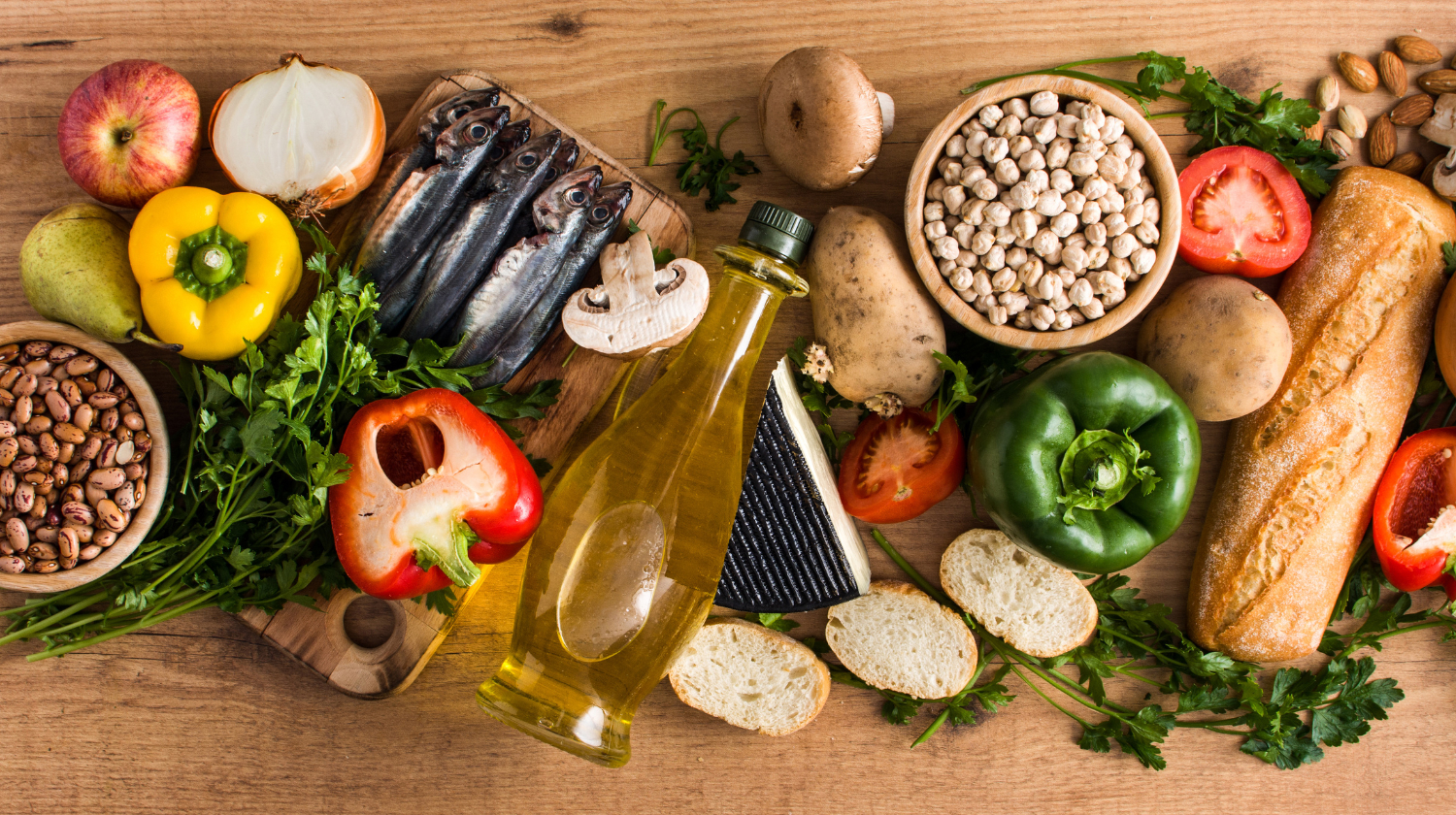
Ever since we’ve started learning more about nutrition and paying attention to the foods we eat, we have become aware of what can cause us harm. Lectins fall under that group, and natural lectin-blocker foods are becoming increasingly popular in the dieting world.
Eating foods high in lectins has been connected to chronic inflammation,[1] obesity, and even autoimmune diseases. That’s why avoiding these foods and replacing them with those who omit them, such as recipes from Dr. Gundry and his Plant Paradox has become so sought after.
What Are Lectins Anyway?
Lectins are proteins found in all plants and some animal products, and they bind to carbohydrates. Also called anti-nutrients,[2] lectins exist to protect the plant from disease and pests in nature, but they are known to cause issues in our digestive system.[3] Their binding properties can cause nutrient deficiencies and malabsorption, trouble with digesting food, and even severe intestinal damage, leading to the development of autoimmune diseases.
5 Best Natural Lectin Blockers In 2024
Since large consumption of foods containing high levels of lectins regularly can cause more harm than good, learning about the best natural lectin blocker foods is of the utmost importance. These five are some of the best you can find and easily implement into your diet.
Cranberries
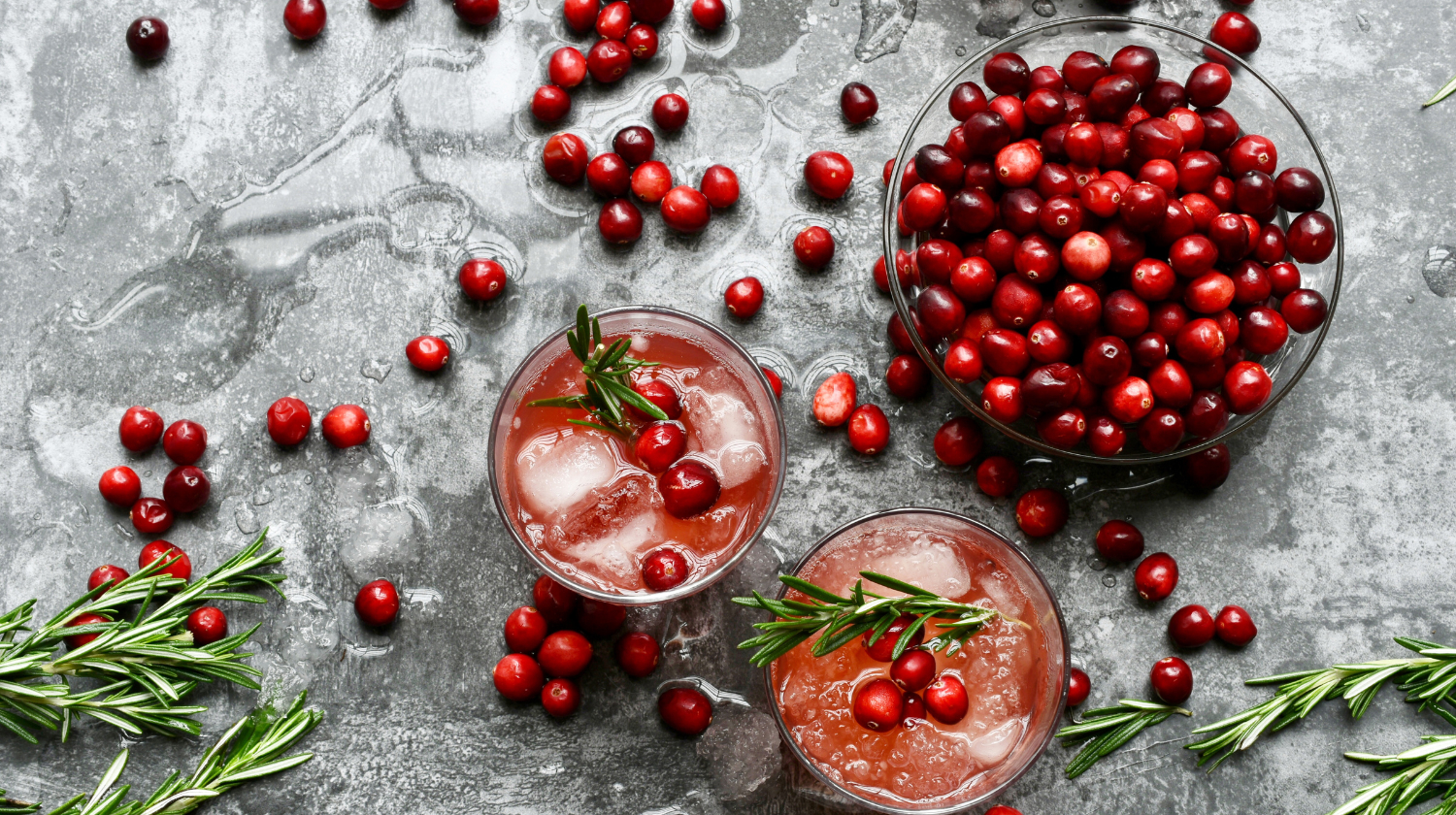
These delicious little red berries contain D-mannose,[4] a potent compound that’s known for its benefits in supporting acute urinary tract infections in women. It also binds to lectins[5] and helps the body absorb them more efficiently.[6]
Cranberries are also powerful antioxidants[7] that aid in overall health and wellness by helping you fight off disease, flush out toxins, and protect against cancer.
In addition to cranberries, you can find lectin blockers in many other fruits, especially oranges, peaches, and blueberries.
A great way to add cranberries to your diet is to make delicious smoothies and smoothie bowls, juices, mocktails, sauces, homemade jams, and desserts.
Crustaceans
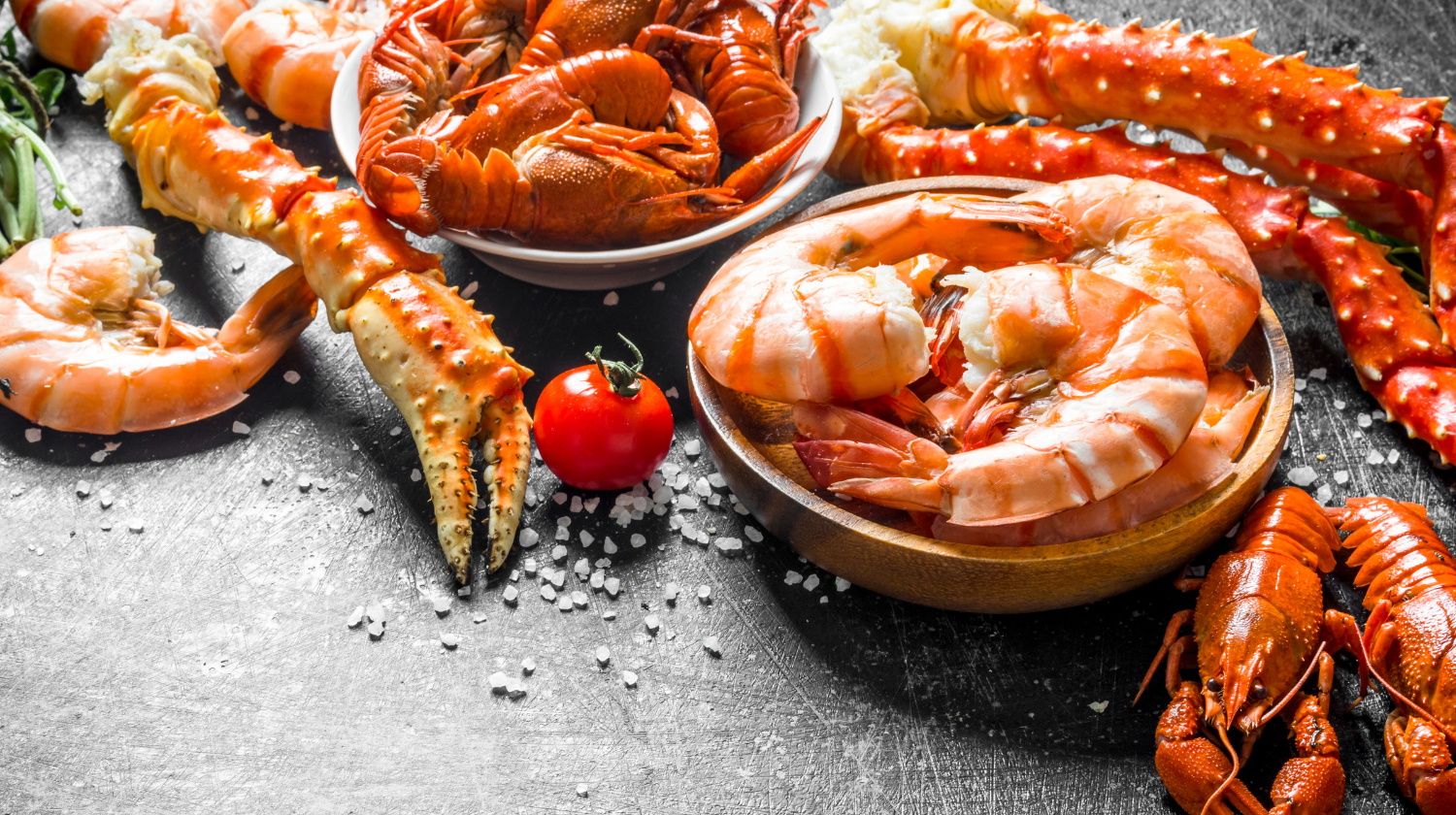
Known for their exquisite flavor, crustaceans are more than just a seafood delicacy. Their skin and shells contain a very powerful compound called glucosamine.[8] Its role in cartilage and joint health is incredibly important, and it’s used to treat an inflammatory condition caused by osteoarthritis, the breakdown, and eventual loss of cartilage.
When it comes to lectins, it’s mostly known to bind to those found in wheat and helps prevent inflammation of the joints. Another study showed its efficacy when binding to lectins in potatoes[9] in children with autism.
Crustaceans are also high in protein, rich in omega-3 fatty acids, and filled with numerous minerals like zinc, copper, iron, and magnesium. Their effects on the human body have been linked to improving heart and brain health,[10] as well as lowering bad cholesterol and significantly decreasing inflammation.
Okra
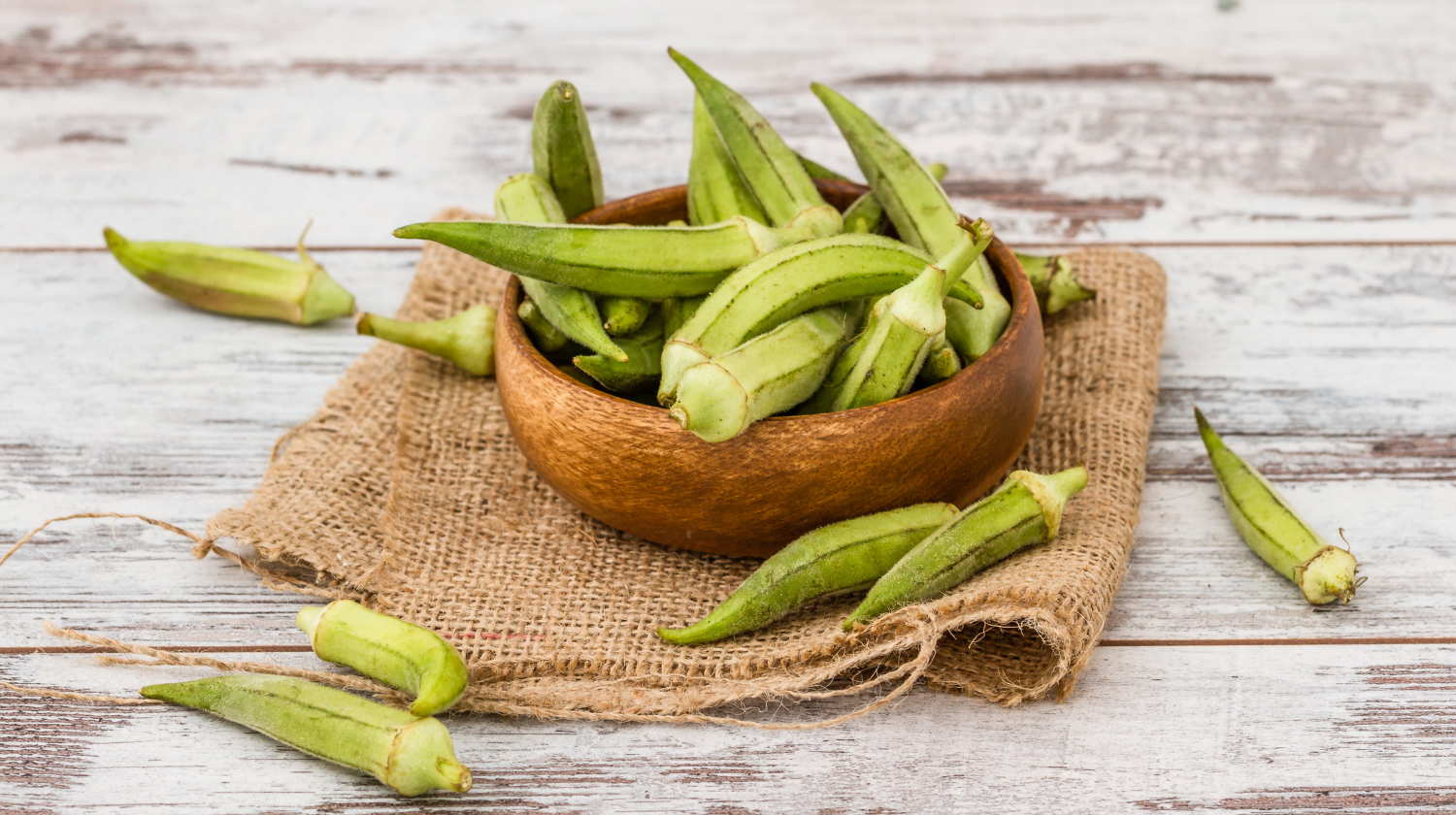
Green little powerhouse okra is rich in raw polysaccharides,[11] which bind to lectin[12] and prevents it from causing inflammation in the body. This natural lectin blocker is also incredibly rich in vitamins A and C, as well as a myriad of antioxidants, helping the body fight free radicals and get rid of toxins.
Native to West African countries, it’s believed that okra was one of the foods that first reached the New World during the days of slave trafficking. Nowadays, it’s an important food worldwide that can be found as an ingredient in many different cuisines. In the US, you can mostly find it in Southern cooking, with plenty of easy recipes to wake up your tastebuds.
Okra is very easy to handle as it can be cooked in many ways, so explore them all and find the one that can quickly become one of your staples.
Kiwi
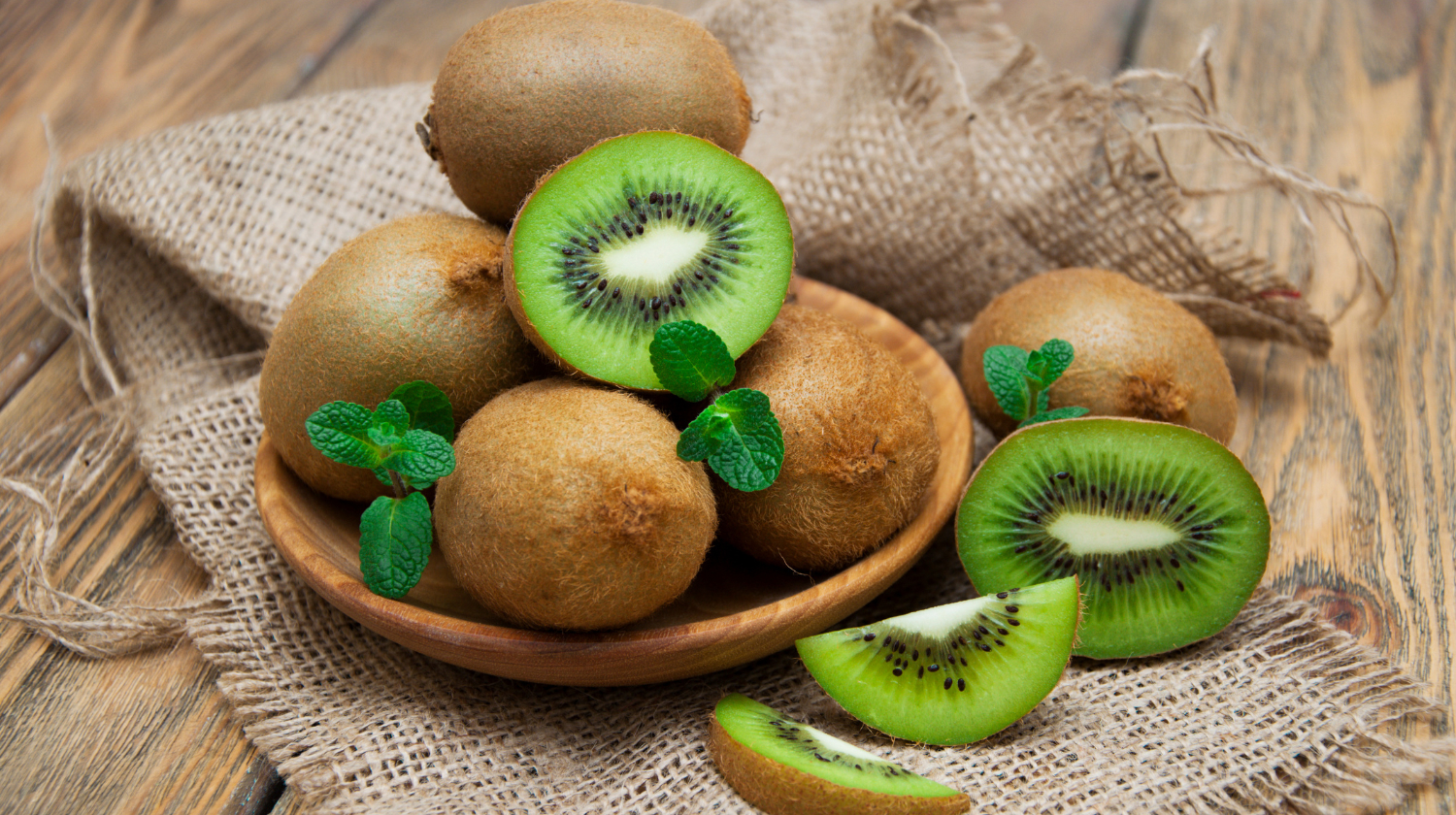
Another green powerhouse, kiwi, is a superfruit that contains high levels of antioxidants as well as vitamin C. It supports heart health as well as the proper function of the digestive and immune systems.[13]
It’s also known to increase the body’s production of mucin,[14] which helps support the digestive tract by forming a sort of slippery, protective barrier inside its walls. Mucin[15] contains sialic acid[16] which binds to lectins and therefore prevents them from causing harm to the digestive tract.
Usually eaten raw or as a part of fruit salads, kiwi can also be mixed up in smoothies, smoothie bowls, chia puddings, salsas, salad dressings, as well as desserts. Just remember to peel it as its skin contains raphides, and oxalate crystals which can cause irritation in the mouth.[17]
Bladderwrack Seaweed
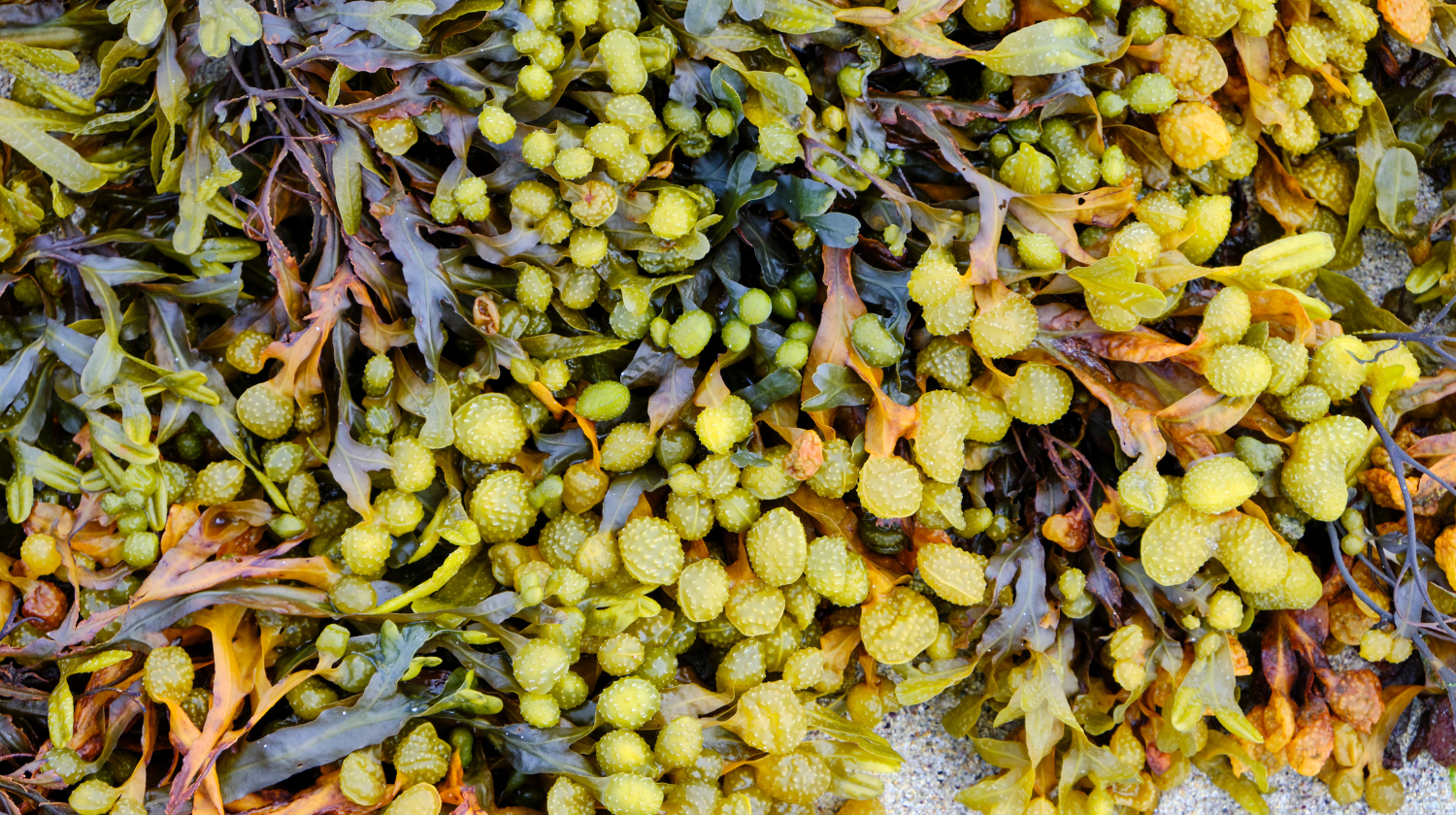
Known for its very slippery texture, bladderwrack seaweed is a natural lectin blocker, and it helps prevent lectin from causing any harm to the body. Even though it’s not one of your usual foods and might not even be easy to find, this seaweed brings on a plethora of other health benefits to the table.
From high levels of iodine and beta-carotene to loads of dietary fiber and weight-loss-inducing L-fucose, bladderwrack is a brown alga full of beneficial micronutrients.[18]
Bladderwrack can be eaten raw or made into tea using 1 teaspoon per cup of hot water. Let it sit for 10 minutes before consuming.
Important to note: Bladderwrack, just like the majority of other edible seaweed, contains high levels of iodine. Those who have thyroid issues, and pregnant and breastfeeding women need to consult with their healthcare provider before adding bladderwrack into their diet.
Foods That Are High In Lectin
As much as it’s important to mention foods that contain natural lectin blockers, it’s also worth noting those which are high in lectin. These include:
- Wheat
- Red kidney beans
- Peanuts
- Cashews
- Pumpkin seeds
- Soybeans
- Tomatoes
- Potatoes
- Lentils
- Eggplants
- Dairy products
The most harmful lectin, phytohaemagglutinin,[19] can be found in red kidney beans. Considered pretty toxic, it can cause red kidney bean poisoning.
Another lectin that is considered dangerous is wheat germ agglutinin[20] (WGA) because of its ability to mimic insulin and therefore create issues with insulin sensitivity and resistance.
How To Reduce Lectins In Your Diet?
In addition to minimizing the foods that are high in lectins and adding those that naturally block them, you can furthermore reduce lectins in your diet by doing the following:
- Soaking beans, legumes, and grains[21] overnight before cooking them
- Peeling the skin and taking out the seeds[22]
- Fermenting[23] your favorite lectin-containing vegetables as the good bacteria break them down
- Using a pressure cooker[24] as this type of cooking is known to significantly reduce the lectins in your food
- Although not the healthiest option, you can also try replacing foods high in lectin with refined versions as they contain fewer lectins (such as cereal, white bread, white pasta, ketchup, and refried beans)
Lectin Blocker Supplement
Another great way to help reduce lectins in your diet is by using lectin blocker supplements such as Dr. Gundry’s Lectin Shield is a blend of 9 specific, high-potent compounds which help your body break down and eliminate lectins. All of them bind to specific lectins, but when working together, they are a real powerhouse. These nine include:
- N Acetyl D-Glucosamine – binds to harmful lectins from wheat
- D-Mannose – mostly binds to lectins found in legumes
- Mucin – forms a slippery protective barrier inside the digestive tract
- Sodium Alginate – controls levels of cholesterol and hypertension
- Vegetable Peptase – an enzyme that aids digestion and helps break down lectins more efficiently as well as other proteins
- Methylsulfonylmethane – reduces joint discomfort, especially when combined with N Acetyl D-Glucosamine
- Larch Arabinogalactans – increases butyrate[25] production in gut bacteria (improves digestive health, supports brain health, and protects against disease)
- Bladderwrack
- Okra
Tips To Stick To A Lectin-Free Diet
It’s hard to imagine you’ll always be able to avoid foods containing high levels of lectins, especially when eating out in restaurants. Still, here are some tips to help you minimize our exposure to them:
- Explore lectin-free recipes[26] and find a few favorites that you can use as staples to always have prepped on hand when you don’t have the time to cook.
- Get a pressure cooker and try using it as much as you can as it helps break down lectins.
- Sprinkle fermented foods into your meals and experiment with different kinds.
- Stick to pasture-raised meats as they contain fewer lectins.
- Involve your friends and family in food making and educate them on the importance of reducing lectins in your diet. Even if it doesn’t present a health issue for them, sticking to moderate consumption of foods containing lectins can only benefit them down the line.
- Don’t freak out when you can’t control the outcome. Sometimes you won’t be able to choose a lectin-free food, and that’s ok. You can get right back on track immediately after.
- Talk to your doctor about your strategy and how you plan to implement a lectin-free diet. Furthermore, you can get tested for vitamins and minerals and see if you lack any so you can properly supplement.
Other Foods To Add To Your Lectin-Free Diet
In addition to lectin-blocking foods and avoiding those with high levels of lectin, dr. Gundry suggests taking the following foods[27] to improve your health and help lower inflammation[28]:
- Avocados[29] – rich in dietary fiber and healthy fats
- Walnuts, Macadamia Nuts, Or Pistachios – full of healthy fats that support heart health
- Dark Chocolate[30] (at least 72% cacao) – rich in antioxidants, it protects against free radicals and their damage
- Broccoli and other cruciferous – full of antioxidants
- Artichokes – rich in dietary fiber and particularly high in folate and vitamins C and K
- Cassava flour – an excellent, mineral-rich alternative to wheat flour for all pastry and baking recipes
Gluten – The Look-alike Lectin
Even though it’s not lectin, gluten is also a protein found in some plants such as wheat, barley, rye, and spelling. It somewhat acts as lectin[31] and is known to create severe damage to the intestinal wall. In those who have gluten sensitivity or intolerance, gluten can be dangerously toxic and create chronic inflammation and irreversible damage.
As the public became more aware of how gluten can be damaging, the gluten-free trend emerged. Thousands of products hit the shelves, promising to deliver the same taste, just without the infamous protein in the recipe.
This is what many are hoping will happen with lectin as the world gets educated on its potentially harmful effects.
Final Thought
Lectins are naturally existing proteins that bind to carbohydrates, and unfortunately, they can cause a lot of damage to the human body. Luckily, there are foods and supplements which contain specific compounds that can block them and prevent them from wreaking havoc.
Frequently Asked Questions
Lectins are naturally occurring proteins found in all plants and some animal products which bind to carbohydrates.
Lectins are present in all plants and some animal products, but mostly wheat, red kidney beans, peanuts, cashews, pumpkin seeds, soybeans, tomatoes, potatoes, lentils, eggplants, and some dairy products.
Lectins are harmful to their binding properties as they are known to cause disruptions in human digestion, as well as cause severe damage to the intestines, potentially leading to chronic inflammation and the development of autoimmune diseases.
Some of the most powerful natural lectin blockers include cranberries, okra, crustaceans, kiwi, and bladderwrack seaweed.
If you’re having issues with lectins in your diet, try eliminating foods that are high in them such as wheat, potatoes, tomatoes, peanuts, and red beans. Instead, try adding natural lectin blockers such as cranberries, okra, crustaceans, kiwi, and bladderwrack seaweed. In addition to altering your diet, you can add a supplement such as dr. Gundry’s Lectin Shield contains 9 powerful lectin-blocking ingredients.
The best way to reduce the lectin levels in your favorite lectin-containing foods is by fermenting, using a pressure cooker, soaking beans, legumes, and grains overnight before cooking them, as well as peeling the skin and taking out the seeds from those vegetables containing them.
Although both proteins are by structure and with many similarities, gluten and lectins aren’t the same. Therefore, many gluten-free foods can still be high in lectins.
+ 31 sources
Health Canal avoids using tertiary references. We have strict sourcing guidelines and rely on peer-reviewed studies, academic researches from medical associations and institutions. To ensure the accuracy of articles in Health Canal, you can read more about the editorial process here
- The Nutrition Source. (2019). Lectins. [online] Available at: https://www.hsph.harvard.edu/nutritionsource/anti-nutrients/lectins/
- Vasconcelos, I.M. and Oliveira, J.T.A. (2004). Antinutritional properties of plant lectins. Toxicon, [online] 44(4), pp.385–403. Available at: https://pubmed.ncbi.nlm.nih.gov/15302522/
- Vojdani A (2015). Lectins, agglutinins, and their roles in autoimmune reactivities. Alternative therapies in health and medicine, [online] 21 Suppl 1. Available at: https://pubmed.ncbi.nlm.nih.gov/25599185/
- Domenici L;Monti M;Bracchi C;Giorgini M;Colagiovanni V;Muzii L;Benedetti Panici P (2016). D-mannose: a promising support for acute urinary tract infections in women. A pilot study. European review for medical and pharmacological sciences, [online] 20(13). Available at: https://pubmed.ncbi.nlm.nih.gov/27424995/
- Turner, M.W. (2003). The role of mannose-binding lectin in health and disease. Molecular Immunology, [online] 40(7), pp.423–429. Available at: https://pubmed.ncbi.nlm.nih.gov/14568388/
- Ofek, I. and Beachey, E.H. (1978). Mannose Binding and Epithelial Cell Adherence of Escherichia coli. Infection and Immunity, [online] 22(1), pp.247–254. Available at: https://pubmed.ncbi.nlm.nih.gov/365746/
- Blumberg, J.B., Basu, A., Krueger, C.G., Lila, M.A., Neto, C.C., Novotny, J.A., Reed, J.D., Rodriguez-Mateos, A. and Toner, C.D. (2016). Impact of Cranberries on Gut Microbiota and Cardiometabolic Health: Proceedings of the Cranberry Health Research Conference 2015. Advances in Nutrition: An International Review Journal, [online] 7(4), pp.759S770S. Available at: https://www.ncbi.nlm.nih.gov/pmc/articles/PMC4942875/
- Zhu, X., Sang, L., Wu, D., Rong, J. and Jiang, L. (2018). Effectiveness and safety of glucosamine and chondroitin for the treatment of osteoarthritis: a meta-analysis of randomized controlled trials. Journal of Orthopaedic Surgery and Research, [online] 13(1). Available at: https://www.ncbi.nlm.nih.gov/pmc/articles/PMC6035477/
- Journal of Nutritional & Environmental Medicine. (2021). Glucosamine and Plant Lectins in Autistic Spectrum Disorders: An Initial Report on Six Children with Uncontrolled Diarrhoea. [online] Available at: https://www.tandfonline.com/doi/abs/10.1080/13590840500088495
- Venugopal, V. and Gopakumar, K. (2017). Shellfish: Nutritive Value, Health Benefits, and Consumer Safety. Comprehensive Reviews in Food Science and Food Safety, [online] 16(6), pp.1219–1242. Available at: https://pubmed.ncbi.nlm.nih.gov/33371588/
- Chen, H., Jiao, H., Cheng, Y., Xu, K., Jia, X., Shi, Q., Guo, S., Wang, M., Du, L. and Wang, F. (2016). In VitroandIn VivoImmunomodulatory Activity of Okra (Abelmoschus esculentus L.) Polysaccharides. Journal of Medicinal Food, [online] 19(3), pp.253–265. Available at: https://pubmed.ncbi.nlm.nih.gov/26836029/
- Wu, A. (1995). Characterization of the okra mucilage by interaction with Gal, Ga1NAc and GlcNAc specific lectins. Biochimica et Biophysica Acta (BBA) – General Subjects, [online] 1243(2), pp.157–160. Available at: https://pubmed.ncbi.nlm.nih.gov/7873558/
- Richardson, D.P., Ansell, J. and Drummond, L.N. (2018). The nutritional and health attributes of kiwifruit: a review. European Journal of Nutrition, [online] 57(8), pp.2659–2676. Available at: https://www.ncbi.nlm.nih.gov/pmc/articles/PMC6267416/
- Hicks, D.G. and Lester, S.C. (2016). Mucocele-Like Lesions. Diagnostic Pathology: Breast, [online] pp.108–111. Available at: https://www.sciencedirect.com/topics/medicine-and-dentistry/mucin
- McGuckin, M.A., Lindén, S.K., Sutton, P. and Florin, T.H. (2011). Mucin dynamics and enteric pathogens. Nature Reviews Microbiology, [online] 9(4), pp.265–278. Available at: https://pubmed.ncbi.nlm.nih.gov/21407243/
- Fischer, E. and Brossmer, R. (1995). Sialic acid-binding lectins: submolecular specificity and interaction with sialoglycoproteins and tumour cells. Glycoconjugate Journal, [online] 12(5), pp.707–713. Available at: https://pubmed.ncbi.nlm.nih.gov/8595263/
- Nguyễn, H. and Savage, G. (2013). Total, Soluble and Insoluble Oxalate Contents of Ripe Green and Golden Kiwifruit. Foods, [online] 2(1), pp.76–82. Available at: https://www.ncbi.nlm.nih.gov/pmc/articles/PMC5302238/
- Catarino, M., Silva, A. and Cardoso, S. (2018). Phycochemical Constituents and Biological Activities of Fucus spp. Marine Drugs, [online] 16(8), p.249. Available at: https://www.ncbi.nlm.nih.gov/pmc/articles/PMC6117670/
- Dolan, L.C., Matulka, R.A. and Burdock, G.A. (2010). Naturally Occurring Food Toxins. Toxins, [online] 2(9), pp.2289–2332. Available at: https://www.ncbi.nlm.nih.gov/pmc/articles/PMC3153292/
- Pellegrina, C.D., Perbellini, O., Scupoli, M.T., Tomelleri, C., Zanetti, C., Zoccatelli, G., Fusi, M., Peruffo, A., Rizzi, C. and Chignola, R. (2009). Effects of wheat germ agglutinin on human gastrointestinal epithelium: Insights from an experimental model of immune/epithelial cell interaction. Toxicology and Applied Pharmacology, [online] 237(2), pp.146–153. Available at: https://pubmed.ncbi.nlm.nih.gov/19332085/
- Nyombaire\, G., Siddiq\, M. and K Dolan^ ‘^ (2010). EFFECT OF SOAKING AND COOKING ON THE OLIGOSACCHARIDES AND LECTINS IN RED KIDNEY BEANS (PHASEOLUS VULGARIS L.). [online] Available at: https://naldc.nal.usda.gov/download/IND43940829/PDF.
- Shi, L., Arntfield, S.D. and Nickerson, M. (2018). Changes in levels of phytic acid, lectins and oxalates during soaking and cooking of Canadian pulses. Food Research International, [online] 107, pp.660–668. Available at: https://pubmed.ncbi.nlm.nih.gov/29580532/
- Cuadrado, C., Gyongyi Hajos, Burbano, C. and Gelencser, E. (2002). Effect of Natural Fermentation on the Lectin of Lentils Measured by Immunological Methods. [online] ResearchGate. Available at: https://www.researchgate.net/publication/234842668_Effect_of_Natural_Fermentation_on_the_Lectin_of_Lentils_Measured_by_Immunological_Methods
- Team, G.M. (2019). 5 Ways to Reduce or Remove Lectins From Your Favorite Foods. [online] Gundry MD. Available at: https://gundrymd.com/remove-lectins/
- Canani, R.B. (2011). Potential beneficial effects of butyrate in intestinal and extraintestinal diseases. World Journal of Gastroenterology, [online] 17(12), p.1519. Available at: https://www.ncbi.nlm.nih.gov/pmc/articles/PMC3070119/
- Gundry MD. (n.d.). Explore Lectin Free Recipes Approved by Dr. Gundry. [online] Available at: https://gundrymd.com/lectin-free-recipes/
- Team, G.M. (2021). Dr. Gundry Diet Food List: A Comprehensive Lectin Free Diet Plan. [online] Gundry MD. Available at: https://gundrymd.com/dr-gundry-diet-food-list/
- Harvard Health. (2014). Foods that fight inflammation – Harvard Health. [online] Available at: https://www.health.harvard.edu/staying-healthy/foods-that-fight-inflammation
- Wang, L., Tao, L., Hao, L., Stanley, T.H., Huang, K.-H., Lambert, J.D. and Kris-Etherton, P.M. (2019). A Moderate-Fat Diet with One Avocado per Day Increases Plasma Antioxidants and Decreases the Oxidation of Small, Dense LDL in Adults with Overweight and Obesity: A Randomized Controlled Trial. The Journal of Nutrition, [online] 150(2), pp.276–284. Available at: https://pubmed.ncbi.nlm.nih.gov/31616932/
- Magrone, T., Russo, M.A. and Jirillo, E. (2017). Cocoa and Dark Chocolate Polyphenols: From Biology to Clinical Applications. Frontiers in Immunology, [online] 8. Available at: https://www.ncbi.nlm.nih.gov/pmc/articles/PMC5465250/
- K�ttgen, E., Kluge, F., Volk, B. and Gerok, W. (1983). The lectin properties of gluten as the basis of the pathomechanism of gluten-sensitive enteropathy. Klinische Wochenschrift, [online] 61(2), pp.111–112. Available at: https://pubmed.ncbi.nlm.nih.gov/6843036/



